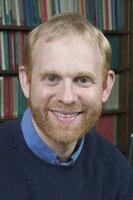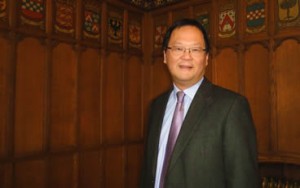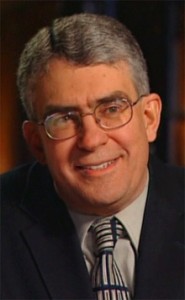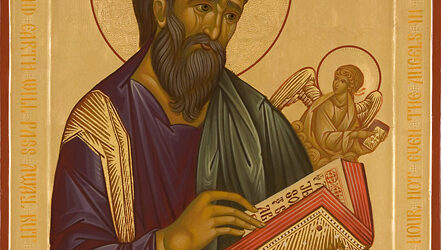Alistair Wilson on the Edinburgh ‘Power, Authority and Canon’ conference
Many thanks to Alistair Wilson of Highland Theological College (University of the Highlands and Islands) for this valuable report on the ‘Power, Authority and Canon’ conference at New College, Edinburgh on 6 May.
Yesterday, I returned to New College, Edinburgh, where I did my undergraduate studies, for a day conference on the theme of ‘Power, Authority and Canon’. Many thanks to Steve for the invitation to write a short report about this conference for this blog. As of the time of writing (11 May), the programme and abstracts are still available online for anyone who would like to see what took place. What follows is a short personal reflection on the papers.
The dignified setting of the Martin Hall was packed as the conference began. There were over sixty registered participants plus a good number of the academic staff from the Divinity School. There was a strong group of speakers, namely John J. Collins (Yale), Michael Satlow (Brown), Manfred Oeming (Heidelberg), Timothy Lim (Edinburgh), John Barton (Oxford), Walter Moberly (Durham), Craig Evans (Acadia), and Shaye Cohen (Harvard). Each session was chaired by one of the New College staff members, who did an admirable job keeping everyone to the schedule. I won’t try to summarise each paper. Instead, I will mention a few matters which caught my attention, whether because they were informative, provocative or entertaining.
 After a warm welcome from the organiser, Professor Timothy Lim, and the Head of School, Professor Paul Foster, the conference was opened by John J. Collins. In Collins’ paper, I appreciated his discussion of references to the law in Ezra-Nehemiah. He argued that there were significant differences between the law described there and the content of the Pentateuch but that some form of the law was considered authoritative. He claimed that the main purpose of authoritative wrings were ‘boundary maintenance’. He also indicated that a text such as the Temple Scroll from Qumran claims the authority of ‘this Torah’ (column 59).
After a warm welcome from the organiser, Professor Timothy Lim, and the Head of School, Professor Paul Foster, the conference was opened by John J. Collins. In Collins’ paper, I appreciated his discussion of references to the law in Ezra-Nehemiah. He argued that there were significant differences between the law described there and the content of the Pentateuch but that some form of the law was considered authoritative. He claimed that the main purpose of authoritative wrings were ‘boundary maintenance’. He also indicated that a text such as the Temple Scroll from Qumran claims the authority of ‘this Torah’ (column 59).
 Michael Satlow’s paper was provocative. He indicated that he had not been happy with the structure of his paper but quipped that ‘however bad the structure of the paper is, it’s not as bad as the structure of the book of Daniel!’ He claimed that Daniel contained prophecies which were clearly wrong and asked how it was that Daniel was accepted as canonical rather than rejected as false prophecy (according to Deuteronomy 18:20-22). His suggestion was that the sections of Daniel containing the ‘bad prophecies’ were only known by small communities until enough time had passed that people forgot how wrong the prophecies had been!
Michael Satlow’s paper was provocative. He indicated that he had not been happy with the structure of his paper but quipped that ‘however bad the structure of the paper is, it’s not as bad as the structure of the book of Daniel!’ He claimed that Daniel contained prophecies which were clearly wrong and asked how it was that Daniel was accepted as canonical rather than rejected as false prophecy (according to Deuteronomy 18:20-22). His suggestion was that the sections of Daniel containing the ‘bad prophecies’ were only known by small communities until enough time had passed that people forgot how wrong the prophecies had been!
 Manfred Oeming’s paper discussed the different life settings in which the process of identifying a canon might take place and also the way in which the response of the general populace to texts was significant in determining canonical status.
Manfred Oeming’s paper discussed the different life settings in which the process of identifying a canon might take place and also the way in which the response of the general populace to texts was significant in determining canonical status.
 Timothy Lim’s paper argued from a range of texts that a text’s claim to be inspired by God was not sufficient to ensure canonical status. In the question time one of the participants also noted that many texts which have been included in a canon do not explicitly claim divine inspiration.
Timothy Lim’s paper argued from a range of texts that a text’s claim to be inspired by God was not sufficient to ensure canonical status. In the question time one of the participants also noted that many texts which have been included in a canon do not explicitly claim divine inspiration.
John Barton made a well-ordered case that, in terms of what might be regarded as canonical, ‘form’ (e.g., a Book called Jeremiah) was more important than precise content (e.g., whether one used the MT or the LXX). In the question time, Walter Moberly helpfully suggested that there might be an analogy with a film adaptation of a book where there might be some variations between the two but there would have to be a common set of key moments for the two works to be recognised as versions of the same story.
 Walter Moberly provided an initial assessment of the recently published book entitled A New New Testament, edited by Hal Taussig. Moberly helpfully discussed a number of sample texts and raised questions about the rationale of the project.
Walter Moberly provided an initial assessment of the recently published book entitled A New New Testament, edited by Hal Taussig. Moberly helpfully discussed a number of sample texts and raised questions about the rationale of the project.
 Craig Evans’ paper drew attention to several texts from Jesus’ teaching as recorded in the Gospels which suggest that Jesus was drawing on Aramaic versions of Scripture rather than either the Hebrew or Greek versions which are known to us.
Craig Evans’ paper drew attention to several texts from Jesus’ teaching as recorded in the Gospels which suggest that Jesus was drawing on Aramaic versions of Scripture rather than either the Hebrew or Greek versions which are known to us.
 Finally, Shaye Cohen offered some reflections on the conference, highlighting among other things the question of definition (‘How do you recognise a canonical book?’) and the role of a community of readers for further thought.
Finally, Shaye Cohen offered some reflections on the conference, highlighting among other things the question of definition (‘How do you recognise a canonical book?’) and the role of a community of readers for further thought.
Concluding remarks from Professor Lim indicated that the papers from the conference will be published in due course.
As is typical of such events, what made this conference valuable for me was a combination of the various presentations I heard, the discussion, and the connections which I made with participants. Each presenter taught me something or challenged me to investigate something further. In many ways, the discussion times were particularly valuable with such an array of senior scholars probing and testing the papers. Although he was not formally one of the participants, Larry Hurtado’s well-informed and thoughtful questions and comments made the event all the more valuable for me. And it was a pleasure to meet with friends and colleagues, whether for the first time or once again.
All in all, a very worthwhile event and I am grateful to all who contributed to it.



